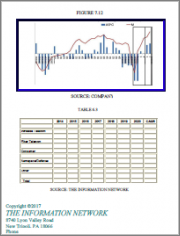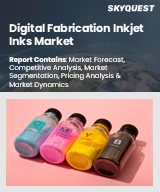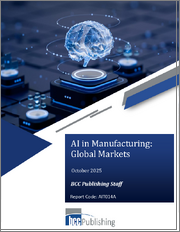
|
시장보고서
상품코드
1500317
세계의 지속가능한 제조업 시장(2024-2031년)Global Sustainable Manufacturing Market 2024-2031 |
||||||
세계 지속가능한 제조업 시장은 예측 기간(2024-2031년) 동안 연평균 15.8%의 괄목할 만한 성장을 보일 것으로 예상됩니다. 시장 성장의 배경에는 폐기물 감소, 에너지 효율, 재활용의 채택이 증가하고 있기 때문입니다. 제조업체들은 절차를 자동화하고, 제품을 맞춤화하며, 전 세계적으로 자원을 경제적으로 활용하여 생산 효율을 높이고 있습니다. 유엔산업개발기구(UNIDO)에 따르면, 2023년 12월 제조업은 3.2% 성장하며 이러한 역동성의 대부분을 차지했으며, 저소득 국가 경제에 가장 큰 기여를 하는 광업과 유틸리티 부문을 합친 부문은 0.9% 감소했습니다.
시장 역학
제품 및 재료의 재활용, 재사용, 재제조 채택 확대
최근 공급망에서 재제조, 재사용, 재활용(RRR & 공급망)에 대한 관심이 높아지고 있습니다. 이 완전한 산업 프로세스는 재구성, 재사용, 수리 및 새로운 부품의 사용을 결합합니다. 재제조는 인쇄, 전기 및 전자, 의료기기 분야에서 자주 활용되고 있습니다. '순환 경제'라는 경제 패러다임은 폐기물 발생을 줄이고 자원 효율성을 높이는 것을 목표로 합니다. 재활용, 재사용, 재제조, 재생 등의 기술을 통해 재료와 사물의 수명을 연장하는 개념을 지지합니다. 재료의 회수, 재활용, 분해를 촉진하기 위해서는 순환성을 염두에 두고 제품을 설계하는 것이 필수적입니다. 세계경제포럼에 따르면 2022년 6월, 전 세계에서 연간 약 4억 톤의 플라스틱 폐기물이 발생하며, 2020년 병 재활용률은 27.2%에 달합니다.
환경 문제에 대한 관심이 높아지면서 지속가능한 제조에 대한 수요가 증가
기업, 정부 및 소비자가 산업 활동이 환경에 미치는 영향에 대한 인식이 높아지면서 탄소 배출량, 폐기물 배출량 및 자원 소비를 줄이는 지속가능한 제조 기술에 대한 요구가 증가하고 있습니다. 세계 규제 프레임워크가 더욱 엄격해지면서 산업계는 더욱 엄격한 기준과 배출량 목표를 준수하고 있으며, 이는 지속가능한 제조 방식을 채택하도록 유도하고 있습니다. 환경 문제에 대한 인식이 높아짐에 따라 기업들은 사업을 재평가하고, 청정 기술에 투자하고, 공급망 전반에 걸쳐 환경 발자국을 줄이기 위한 계획을 세우고 있습니다.
시장 세분화
지속가능한 제조업 세계 시장을 세부적으로 분석하면 다음과 같은 부문, 제품 및 응용 분야가 포함됩니다.
- 제공 제품별로 시장은 재생 리튬이온 배터리, 재생 재료, 재생 플라스틱, 재생 금속, 재생 탄소섬유, 물 재활용 및 재사용으로 세분화됩니다.
- 용도별로는 자동차, 에너지, 전기 및 전자, 포장, 건축 및 건설, 해양, 항공우주, 전력, 화학, 기타 용도(헬스케어)로 세분화됩니다.
재생 플라스틱이 가장 큰 부문을 차지할 것으로 예상
지속가능한 제조업 세계 시장은 재생 리튬이온 배터리, 재생 재료, 재생 플라스틱, 재생 금속, 재생 탄소섬유, 물 재활용 및 재사용으로 세분화됩니다. 이 중 재생 플라스틱이 시장에서 가장 큰 비중을 차지할 것으로 예상됩니다. 성장을 뒷받침하는 주요 요인으로는 세계 플라스틱 재활용 수요의 증가를 들 수 있습니다. 예를 들어 2022년 10월, PlasticsEurope에 따르면 2021년 세계 플라스틱 생산량은 390.7톤에 달했습니다. 전 세계 플라스틱 생산량 중 소비자 사용 후 재활용 플라스틱이 8.3%, 바이오 기반/바이오 공물 플라스틱이 1.5%를 차지합니다. 버진 플라스틱에 대한 지속가능한 대안을 제공하고 순환 경제를 촉진하는 재활용 플라스틱은 지속가능한 제조업 시장에 필수적입니다. 플라스틱이 매립지나 해양에서 전환되면 천연 자원을 보호하고, 버진 플라스틱 제조에 비해 에너지 사용량과 이산화탄소 배출량을 줄일 수 있습니다.
패키징 하위 부문이 큰 시장 점유율을 차지
지속가능한 제조업 세계 시장은 용도별로 자동차, 에너지, 전기 및 전자, 포장, 건축 및 건설, 해양, 항공우주, 전력, 화학, 기타 용도(헬스케어)로 세분화됩니다. 이 중 포장 하위 부문이 시장의 상당 부분을 차지할 것으로 예상됩니다. 재활용 플라스틱은 포장용으로 점점 더 많은 수요가 증가하고 있습니다. 포장재는 폴리에틸렌 테레프탈레이트(PET), 고밀도 폴리에틸렌(HDPE), 폴리 프로필렌(PP) 등 다양한 재활용 플라스틱으로 만들어집니다. 이러한 물질은 용기, 병 및 기타 포장재에서 자주 발견됩니다. 재생 플라스틱 포장재를 사용하면 재생 불가능한 화석 연료로 만든 버진 플라스틱의 필요성을 줄이고 천연 자원을 보호 할 수 있습니다. 재생 플라스틱 포장재는 원료로 만든 새 플라스틱보다 적은 에너지로 생산할 수 있기 때문에 환경에 긍정적인 영향을 미치고 탄소 배출량을 줄일 수 있습니다.
지역별 전망
세계 지속가능한 제조업 시장은 북미(미국, 캐나다), 유럽(영국, 이탈리아, 스페인, 독일, 프랑스, 기타 유럽), 아시아태평양(인도, 중국, 일본, 한국, 기타 아시아태평양), 기타 지역(중동 및 아프리카, 라틴아메리카) 등 지역별로 세분화되어 있습니다.
유럽에서 지속가능한 제조에 대한 수요 증가
- 이 지역의 성장은 산업 제조 부문에서 환경 친화적이고 지속가능한 관행이 채택되면서 지속가능한 제조에 대한 수요가 증가하고 있기 때문입니다. 유럽 환경청에 따르면, 2023년 11월 유럽 그린딜(EGD)의 시행으로 2021년부터 2030년까지 연간 약 5,200억 파운드(5,628억 달러)에 달하는 막대한 지속가능성 전환 투자가 필요하며, EU의 순 제로 기술 제조 역량을 강화하기 위한 추가 투자액은 2023년부터 2030년까지 약 920억 파운드(995억 달러)에 달할 것으로 예상됩니다.
- 2024년 3월, GOV.UK는 영국의 제조업과 연구개발을 강화하기 위해 3억 6,000만 파운드(3억 8,970만 달러)를 투자한다고 발표했습니다. 보다 지속가능한 항공 부문을 발전시키기 위해 탄소 제로 항공기 기술에 2억 파운드(2억 1,650만 달러), 자동차 기술에 7,300만 파운드(7,900만 달러)를 투자할 예정입니다.
북미가 주요 시장 점유율을 차지
북미는 애플, 존슨앤드존슨 서비스, 나이키, 테슬라, 지속가능한 제조 제공업체 등 다수의 저명한 지속가능한 제조 기업이 존재하기 때문에 전체 지역 중 가장 큰 비중을 차지하고 있습니다. 화학 및 정제, 시멘트 및 콘크리트, 철강, 알루미늄 및 금속, 식품 및 음료, 유리, 펄프 및 제지 산업에서 지속가능한 제조 채택이 증가하면서 이 지역의 시장 성장을 주도하고 있는 것이 주요 성장 요인입니다. 이 지역 정부들은 산업계의 온실가스 배출을 줄이기 위해 지속가능한 제조업에 투자하고 있습니다. 예를 들어, 미국 에너지부(DOE)는 2024년 3월, 에너지 집약적 산업의 탈탄소화, 산업 온실가스 배출 감소, 고임금 노조 고용 지원, 산업 커뮤니티 활성화, 국가 제조 경쟁력 강화를 위해 20개 이상의 주에 걸쳐 33개 프로젝트에 60억 달러를 투자할 것이라고 발표했습니다.
미국 국립표준기술연구소(NIST)에 따르면 2020년 10월, 제조업과 그 공급망이 미국에 미치는 환경 영향에 기여합니다. 이 수치에 따르면 미국 배출량의 76.6%는 제조업 생산으로 인한 것이며, 17.0%는 제조업에 직접적으로 기인합니다. 나머지는 광업, 유틸리티, 건설, 농업 등 지원 부문이 차지합니다. 미국 에너지 정보국은 2050년까지 제조 공정을 포함한 산업 부문의 배출량이 26.0% 증가할 것으로 예상하는 반면, 다른 고생산 부문의 배출량은 정체 또는 감소할 것으로 예측했습니다.
세계 지속가능한 제조 시장에 진출한 주요 기업으로는 Dassault Systemes S.E., General Electric, Johnson & Johnson Service, Koninklijke Philips N.V., Siemens AG 등이 있습니다. 시장 경쟁력을 유지하기 위해 시장 기업들은 제휴, 합병, 인수 등의 전략을 적용하고 사업 확장 및 제품 개발에 점점 더 많은 노력을 기울이고 있습니다. 예를 들어, 2023년 4월 지멘스 AG와 IBM Corp.은 지속가능한 제품 개발 및 운영을 가속화하기 위해 협력했습니다. 양사는 기계공학, 전자공학, 전기공학, 소프트웨어 공학 및 기타 분야를 연결하는 추적성과 지속가능한 제품 개발을 지원하는 새로운 시스템 엔지니어링과 자산 관리를 결합한 소프트웨어 솔루션을 개발하고 있습니다.
최근 동향
- 2023년 5월, 후지쯔와 마이크로소프트는 '지속가능성 혁신'을 실현하기 위한 세계 파트너십을 발표했습니다. 이 협약에는 후지쯔의 수십억 달러 규모의 유밴스(Uvance) 사업 확장을 촉진하기 위한 양사의 투자가 포함되어 있으며, 마이크로소프트의 클라우드와 업계를 선도하는 기술을 활용하여 보다 지속가능한 관행과 솔루션을 개발함으로써 전 세계 조직을 디지털로 전환하는 데 도움이 될 것입니다.
목차
제1장 보고서 개요
- 업계 현황 분석과 성장 가능성 전망
- 조사 방법과 툴
- 시장 내역
- 부문별
- 지역별
제2장 시장 개요와 인사이트
- 조사 범위
- 애널리스트의 인사이트와 현재 시장 동향
- 주요 업계 동향
- 추천사항
- 결론
제3장 경쟁 상황
- 주요 기업 분석
- Dassault Systemes S.E.
- 개요
- 재무 분석
- SWOT 분석
- 최근의 동향
- General Electric Company
- 기업 개요
- 재무 분석
- SWOT 분석
- 최근의 동향
- Johnson & Johnson Services, Inc.
- 개요
- 재무 분석
- SWOT 분석
- 최근의 동향
- Koninklijke Philips N.V.
- 개요
- 재무 분석
- SWOT 분석
- 최근의 동향
- Siemens AG
- 개요
- 재무 분석
- SWOT 분석
- 최근의 동향
- 주요 전략 분석
제4장 시장 세분화
- 지속가능한 제조업 세계 시장 : 제품별
- 재생 리튬이온 배터리
- 재활용 재료
- 재활용 플라스틱
- 재활용 금속
- 재활용 탄소섬유
- 물 재활용과 재이용
- 지속가능한 제조업 세계 시장 : 용도별
- 자동차
- 에너지
- 전기·전자
- 패키징
- 건축·건설
- 해양
- 항공우주
- 전력
- 화학
- 기타 용도(헬스케어)
제5장 지역 분석
- 북미
- 미국
- 캐나다
- 유럽
- 영국
- 독일
- 이탈리아
- 스페인
- 프랑스
- 기타 유럽
- 아시아태평양
- 중국
- 인도
- 일본
- 한국
- 기타 아시아태평양
- 세계 기타 지역
- 라틴아메리카
- 중동 및 아프리카
제6장 기업 개요
- 3M
- Alat
- Apple Inc.
- BASF SE
- Fujitsu Ltd.
- Hitachi Energy Ltd.
- Interface, Inc.
- Kyndryl Inc.
- Nike, Inc.
- Patagonia, Inc
- Procter & Gamble
- SAP SE
- Schneider Electric
- Sony Group Corp.
- Tesla, Inc.
- The Coca-Cola Company
- Walmart Inc.
Global Sustainable Manufacturing Market Size, Share & Trends Analysis Report by Offering (Recycled Lithium-Ion Battery, Recycled Material, Recycled Plastic, Recycled Metal, Recycled Carbon Fiber, and Water Recycle and Reuse) by Application (Automotive, Energy, Electrical & Electronics, Packaging, Building & Construction, Marine, Aerospace, Power, Chemicals and Other) Forecast Period (2024-2031)
Global sustainable manufacturing market is anticipated to grow at a significant CAGR of 15.8% during the forecast period (2024-2031). The market growth is attributed to the increasing adoption of waste reduction, energy efficiency, and recycling. Manufacturers automate procedures, customize products, and boost production efficiency with the economical use of resources globally. According to the United Nations Industrial Development Organization, in December 2023, manufacturing accounted for most of this dynamism, with an increase of 3.2%, while the combined mining and utilities sector-the largest contributor to the economy in low-income countries contracted by 0.9%.
Market Dynamics
Growing Adoption of Recycling, Reusing, and Remanufacturing Products And Materials.
Recently, there has been an increasing interest in supply chain remanufacturing, reuse, and recycling (RRR & Supply chain). The complete industrial process combines rebuilding, reusing, mending, and using new parts. Remanufacturing is frequently used in the fields of printing, electrical and electronic, and medical equipment. An economic paradigm called the "circular economy" aims to reduce waste production and increase resource efficiency. Through techniques including recycling, reusing, remanufacturing, and refurbishing, it supports the notion of extending the life of materials and things. Designing products with circularity in mind is essential to facilitate material recovery, recycling, and disassembly. According to the World Economic Forum, in June 2022, globally about 400.0 million tons of plastic waste yearly. The total bottle recycling rate for 2020 was 27.2%.
Increasing Environmental Concerns Resulting in Demand for Sustainable Manufacturing
The growing demand for sustainable manufacturing techniques that reduce carbon emissions, waste output, and resource consumption as corporations, governments, and consumers become more conscious of the environmental effects of industrial activities. Global regulatory frameworks are becoming more stringent, making industries comply with more stringent standards and emissions targets, which is propelling the adoption of sustainable manufacturing practices. Companies are reevaluating their operations, investing in clean technologies, and putting plans in place to lessen their environmental footprint throughout the supply chain as a result of the increased awareness of environmental challenges.
Market Segmentation
Our in-depth analysis of the global sustainable manufacturing market includes the following segments, offerings, and applications.
- Based on the offering, the market is sub-segmented into recycled lithium-ion batteries, recycled material, recycled plastic, recycled metal, recycled carbon fiber, and water recycling and reuse.
- Based on the application, the market is sub-segmented into automotive, energy, electrical & electronics, packaging, building & construction, marine, aerospace, power, chemicals, and other applications (healthcare).
Recycled Plastic is Projected to Hold as the Largest Segment
Based on the offering, the global sustainable manufacturing market is sub-segmented into recycled lithium-ion batteries, recycled material, recycled plastic, recycled metal, recycled carbon fiber, and water recycling and reuse. Among these recycled plastics, the sub-segment is expected to hold the largest share of the market. The primary factors supporting the growth include increasing demand for plastic recycling globally. For instance, in October 2022, according to PlasticsEurope, global plastics production reached 390.7 metric tons in 2021. Post-consumer recycled plastics and bio-based/bio-attributed plastics respectively accounted for 8.3% and 1.5% of the global plastics production. By providing a sustainable substitute for virgin plastics and promoting the circular economy, recycled plastics are essential to the market for sustainable manufacturing. When plastic is diverted from landfills and the ocean, it helps conserve natural resources, and when compared to the manufacturing of virgin plastic, it lowers energy usage and carbon emissions.
Packaging Sub-segment to Hold a Considerable Market Share
Based on application, the global sustainable manufacturing market is sub-segmented into automotive, energy, electrical & electronics, packaging, building & construction, marine, aerospace, power, chemicals, and other applications (healthcare). Among these, the packaging sub-segment is expected to hold a considerable share of the market. Recycled plastics are growing increasingly in demand for packaging. Packaging materials are made from a variety of recycled plastics, including polyethylene terephthalate (PET), high-density polyethylene (HDPE), and polypropylene (PP). These substances are frequently found in containers, bottles, and other packaging materials. Using recycled plastic packaging helps preserve natural resources by lowering the need for virgin plastics made from non-renewable fossil fuels. Recycled plastic packaging can be produced with less energy than new plastics made from raw materials, which can have a positive environmental impact and cut carbon emissions.
Regional Outlook
The global sustainable manufacturing market is further segmented based on geography including North America (the US, and Canada), Europe (UK, Italy, Spain, Germany, France, and the Rest of Europe), Asia-Pacific (India, China, Japan, South Korea, and Rest of Asia-Pacific), and the Rest of the World (the Middle East & Africa, and Latin America).
Increasing Demand for Sustainable Manufacturing in Europe
- The regional growth is attributed to the growing demand for sustainable manufacturing with the rising adoption of environment-friendly and sustainable practices in the industrial manufacturing sector. According to the European Environment Agency, in November 2023, the implementation of the European Green Deal (EGD) demands a huge amount of investments in sustainability transition, around £520.0 billion ($562.8 billion) per year from 2021-2030. Additional investments to boost the EU's capacity to manufacture net-zero technologies amount to around £92.0 billion ($99.5 billion) from 2023 until 2030.
- In March 2024, GOV.UK announced £360.0 million ($389.7 million) investment to boost British manufacturing and R&D. Government joint investment of £200.0 million ($216.5 million) in zero-carbon aircraft technology to develop a more sustainable aviation sector and almost £73.0 million ($79.0 million) in automotive technology.
North America Holds Major Market Share
Among all the regions, North America holds a significant share owing to numerous prominent sustainable manufacturing companies such as Apple Inc., Johnson & Johnson Services, Inc., Nike, Inc., Tesla, Inc., and sustainable manufacturing providers in the region. The growth is mainly attributed to the increasing adoption of sustainable manufacturing in chemicals and refining, cement and concrete, iron and steel, aluminum and metals, food and beverage, glass and pulp and paper industries drive the market growth in the region. The government in the region is investing in sustainable manufacturing to reduce industrial greenhouse gas emissions. For instance, in March 2024, The US Department of Energy (DOE) announced $6.0 billion for 33 projects across more than 20 states to decarbonize energy-intensive industries, reduce industrial greenhouse gas emissions, support good-paying union jobs, revitalize industrial communities, and strengthen the nation's manufacturing competitiveness.
According to the National Institute of Standards and Technology (NIST), in October 2020, Contributions to US environmental impacts from the manufacturing industry and its supply chains. The figure shows that 76.6% of US emissions are driven by manufacturing production, and 17.0% is directly attributed to the manufacturing sector. The remainder is driven by supporting sectors including mining, utilities, construction, and agriculture. The US Energy Information Administration predicts the industrial sector including manufacturing processes will see an increase in emissions of 26.0% by 2050 while emissions of other high-producing sectors hold steady or decline.
The major companies serving the global sustainable manufacturing market include Dassault Systemes S.E., General Electric Company, Johnson & Johnson Services, Inc., Koninklijke Philips N.V., and Siemens AG, among others. The market players are increasingly focusing on business expansion and product development by applying strategies such as collaborations, mergers, and acquisitions to stay competitive in the market. For instance, in April 2023, Siemens AG and IBM Corp. collaborated to accelerate sustainable product development and operations. The two companies are developing a new system engineering and asset management combined software solution to support traceability and sustainable product development linking domains including mechanical, electronics, electrical, and software engineering.
Recent Development
- In May 2023, Fujitsu and Microsoft announced a global partnership to enable "sustainability transformation". The agreement involves investment by both companies to drive the expansion of Fujitsu's multibillion-dollar Uvance business leverages the Microsoft Cloud and industry-leading technologies to digitally transform organizations around the globe by developing more sustainable practices and solutions.
Table of Contents
1. Report Summary
- Current Industry Analysis and Growth Potential Outlook
- 1.1. Research Methods and Tools
- 1.2. Market Breakdown
- 1.2.1. By Segments
- 1.2.2. By Region
2. Market Overview and Insights
- 2.1. Scope of the Report
- 2.2. Analyst Insight & Current Market Trends
- 2.2.1. Key Industry Trends
- 2.2.2. Recommendations
- 2.2.3. Conclusion
3. Competitive Landscape
- 3.1. Key Company Analysis
- 3.2. Dassault Systemes S.E.
- 3.2.1. Overview
- 3.2.2. Financial Analysis
- 3.2.3. SWOT Analysis
- 3.2.4. Recent Developments
- 3.3. General Electric Company
- 3.3.1. Overview
- 3.3.2. Financial Analysis
- 3.3.3. SWOT Analysis
- 3.3.4. Recent Developments
- 3.4. Johnson & Johnson Services, Inc.
- 3.4.1. Overview
- 3.4.2. Financial Analysis
- 3.4.3. SWOT Analysis
- 3.4.4. Recent Developments
- 3.5. Koninklijke Philips N.V.
- 3.5.1. Overview
- 3.5.2. Financial Analysis
- 3.5.3. SWOT Analysis
- 3.5.4. Recent Developments
- 3.6. Siemens AG
- 3.6.1. Overview
- 3.6.2. Financial Analysis
- 3.6.3. SWOT Analysis
- 3.6.4. Recent Developments
- 3.7. Key Strategy Analysis
4. Market Segmentation
- 4.1. Global Sustainable Manufacturing Market by Offering
- 4.1.1. Recycled Lithium-Ion Battery
- 4.1.2. Recycled Material
- 4.1.3. Recycled Plastic
- 4.1.4. Recycled Metal
- 4.1.5. Recycled Carbon Fiber
- 4.1.6. Water Recycle and Reuse
- 4.2. Global Sustainable Manufacturing Market by Application
- 4.2.1. Automotive
- 4.2.2. Energy
- 4.2.3. Electrical & Electronics
- 4.2.4. Packaging
- 4.2.5. Building & Construction
- 4.2.6. Marine
- 4.2.7. Aerospace
- 4.2.8. Power
- 4.2.9. Chemicals
- 4.2.10. Other Applications (Healthcare)
5. Regional Analysis
- 5.1. North America
- 5.1.1. United States
- 5.1.2. Canada
- 5.2. Europe
- 5.2.1. UK
- 5.2.2. Germany
- 5.2.3. Italy
- 5.2.4. Spain
- 5.2.5. France
- 5.2.6. Rest of Europe
- 5.3. Asia-Pacific
- 5.3.1. China
- 5.3.2. India
- 5.3.3. Japan
- 5.3.4. South Korea
- 5.3.5. Rest of Asia-Pacific
- 5.4. Rest of the World
- 5.4.1. Latin America
- 5.4.2. The Middle East & Africa
6. Company Profiles
- 6.1. 3M
- 6.2. Alat
- 6.3. Apple Inc.
- 6.4. BASF SE
- 6.5. Fujitsu Ltd.
- 6.6. Hitachi Energy Ltd.
- 6.7. Interface, Inc.
- 6.8. Kyndryl Inc.
- 6.9. Nike, Inc.
- 6.10. Patagonia, Inc
- 6.11. Procter & Gamble
- 6.12. SAP SE
- 6.13. Schneider Electric
- 6.14. Sony Group Corp.
- 6.15. Tesla, Inc.
- 6.16. The Coca-Cola Company
- 6.17. Walmart Inc.



















